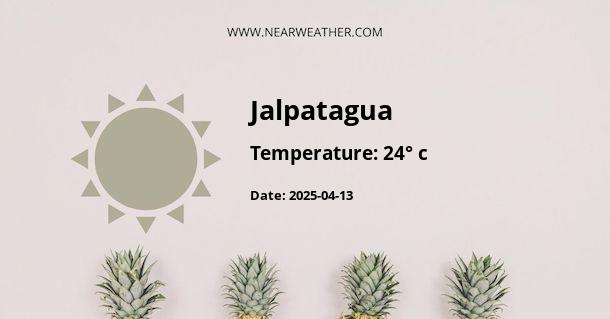Jalpatagua, Guatemala: Climate and Weather Overview
Jalpatagua, located in the southeastern part of Guatemala, experiences a diverse climate that is influenced by a combination of factors including its geographical location, elevation, and proximity to the Pacific Ocean. Understanding the climate and weather patterns in Jalpatagua is essential for residents, tourists, and businesses operating in the region. This comprehensive guide provides a detailed overview of Jalpatagua's climate throughout the year, enabling individuals to make informed decisions regarding travel plans, outdoor activities, and agricultural pursuits.
Annual Climate Summary for Jalpatagua
Jalpatagua enjoys a tropical climate characterized by distinct wet and dry seasons. The region experiences relatively high temperatures year-round, showcasing minimal temperature variations between seasons. The following table outlines the average monthly temperatures and precipitation levels in Jalpatagua:
| Month | Temperature (°C) | Precipitation (mm) |
|---|---|---|
| January | 30 | 3 |
| February | 31 | 3 |
| March | 32 | 5 |
| April | 33 | 30 |
| May | 33 | 165 |
| June | 32 | 240 |
| July | 32 | 240 |
| August | 32 | 217 |
| September | 32 | 190 |
| October | 31 | 100 |
| November | 30 | 30 |
| December | 30 | 9 |
The above data illustrates the relatively consistent temperatures throughout the year, with a distinct contrast between the drier months from November to April and the wetter months from May to October.
Seasonal Weather Patterns
Jalpatagua experiences two primary seasons: the dry season and the rainy season. The dry season typically lasts from November to April, characterized by minimal precipitation and warm temperatures. During this period, visitors can expect clear, sunny days and comfortable humidity levels, making it an ideal time for outdoor activities and sightseeing.
Conversely, the rainy season spans from May to October, with the heaviest rainfall occurring in June, July, and August. During this time, the region receives abundant precipitation, leading to lush vegetation and vibrant landscapes. While the rain can be intense at times, it often occurs in the form of short, heavy downpours, interspersed with periods of sunshine. Travelers should be prepared for occasional rainfall and plan outdoor excursions accordingly.
Natural Disasters and Climate Risks
It is important to note that Jalpatagua, like many regions in Central America, is susceptible to natural disasters such as tropical storms, hurricanes, and flooding, particularly during the rainy season. Visitors and residents should stay informed about weather alerts and take necessary precautions to ensure their safety in the event of adverse weather conditions.
Furthermore, climate change poses a growing concern for Jalpatagua and the surrounding areas. The potential impacts of climate change, including altered rainfall patterns and increased frequency of extreme weather events, may have far-reaching effects on the region's agriculture, biodiversity, and local communities. Efforts to mitigate and adapt to these changes are crucial for the long-term resilience of Jalpatagua.
Conclusion
In conclusion, Jalpatagua's climate offers a blend of tropical warmth, distinct wet and dry seasons, and the occasional challenge of natural disasters. Understanding the region's weather patterns is essential for residents, businesses, and travelers seeking to fully experience all that Jalpatagua has to offer. By staying informed about the climate and taking proactive measures to address potential risks, individuals can make the most of their time in this vibrant and diverse region of Guatemala.
A - Jalpatagua's Latitude is 14.141670 & Longitude is -90.008614.
A - Weather in Jalpatagua is 24° today.
A - Climate Conditions in Jalpatagua shows overcast clouds today.
A - Humidity in Jalpatagua is 63% today.
A - Wind speed in Jalpatagua is 18.18 km/h, flowing at 48° wind direction. today.
